DNA in a cup of water
In the movie, “Signs”, one of the characters, Bo, has an interesting habit of leaving half-full glasses of water lying around the house. To Bo, the water “tastes funny” after she drinks only a few sips of it. This odd habit becomes instrumental in the story’s ending. (I will not spoil it for those of you who have never watched this film!)
Incidentally, water can taste funny due to substances and/or forms of life found in it. Too bad Bo wasn’t a scientist. Perhaps she could have extracted DNA from each glass of water and found out the kinds of organisms that have existed in this water.
Dutch scientists (Thomsen et. al., 2011) have been successful in identifying organisms that have been swimming through as little as a cup of freshwater. These scientists claim that organisms that swam through these waters within two weeks of collection left traces of DNA behind. This is quite a useful tool in determining the ecology of any given freshwater area. Scientists can use this information to identify rare or invasive species and monitor the activity of organisms found in a particular habitat within a period of time.
For more information, please go to:
http://onlinelibrary.wiley.com/doi/10.1111/j.1365-294X.2011.05418.x/abstract
| Print article | This entry was posted by Melissa Lee on January 23, 2012 at 7:28 pm, and is filed under DNA Barcoding. Follow any responses to this post through RSS 2.0. You can leave a response or trackback from your own site. |
No comments yet.
No trackbacks yet.

Jumping Down the Road to Cancer.
about 13 years ago - No comments
Lying dormant in our genomes are millions of jumping genes. Originally discovered by Barbara McClintock, transposons are DNA sequences that can move from one location to another in our DNA. Transposons cause mutations when they jump to new locations, so keeping them from jumping is important. However, although transposons are largely silent, every person probably…

When is a clone not a clone? When it’s a mosaic.
about 13 years ago - No comments
For the last decade or so, progressive cancer treatments involved taking samples of tumors, testing the cells to determine the genetic makeup, and then prescribing medicines targeted to specific mutations. There are many benefits to this approach, but it doesn’t always work. It turns out that tumors aren’t uniform; they are mosaics of cells that…

Jumping genes in your brain?
about 13 years ago - No comments
Mobile chunks of DNA that walk their way from one position in the genome to another may affect neurological diseases and could have subtle influences on normal brain function and behavior, according to a recent study in Nature. Alu is an example of a so-called “jumping gene” – a transposable DNA sequence that “reproduces” by…
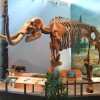
DNA sequencing helps discover cavemen’s tools and diet
about 13 years ago - No comments
In the 1970s a team of archaeologists led by Carl Gustafson unearthed the remains of a single, 3-ton, male mastodon (Mammut americanum, a close relative of mammoths and elephants), hunted and butchered by a group of men at the Manis site in the state of Washington, USA (Gustafson 1979). Among the mastodon remains they found…
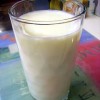
Evolution – Got Milk?
about 13 years ago - No comments
After asking students during a lesson on mutations if it is possible that a mutation in DNA could be good, most students will nod yes without much understanding. Recently, I finally had one student raise his hand immediately and answer the question (with extreme surprise that no other students were blurting out the answer)…”evolution!” He…
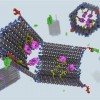
What do you get when you cross an immunologist, a nanotechnologist, and a geneticist? A DNA nano-robot!
about 13 years ago - No comments
Welcome to the world of nanobiotechnology and translational research… In a brilliant example of multidisciplinary research, Harvard Medical School’s Shawn Douglas, Ido Bachelet, and George Church combined forces to build nanostructures that would mimic the body’s immune system to recognize cancer cells and trick them into self-destructing. Their research is published today in Science but…
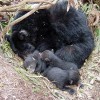
Hibernation – Why Not Me?
about 13 years ago - No comments
It’s the season of hibernation, something I’ve always wished I could do. Oh, to wrap up in a ball, sleep away the winter, and wake to a beautiful spring day – like Bambi! Although the thought has always intrigued me, it never really occurred to me what a feat hibernation actually is. It turns out…
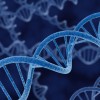
Controlling gene expression through diet
about 13 years ago - No comments
Epigenetics is the study of chemical reactions that control the on and off switch of genes at specific times and the factors influencing them. Environment is a factor that influences epigenetic change which may encompass behavior, stress or diet. The easiest of the three to make observations from is diet. When we think of food,…
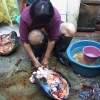
A virus in my meal?
about 13 years ago - No comments
Could the meat in your plate pose a health risk for you? If the animal where it came from was properly raised and handled, and the meat went through a sanitary inspection before reaching your plate, there is little chance it can cause you a health problem. But, what could happen if a sanitary authority has…
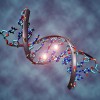
Tag…You’re It!
about 13 years ago - 1 comment
Classic genetics alone is unable to explain the diversity we see within a population of living things. This also cannot explain how identical twins with the same DNA sequences can have differences in their traits and development of disease. First introduced in 1939 by C.H. Waddington, epigenetics is now able to offer some explanation, as…
